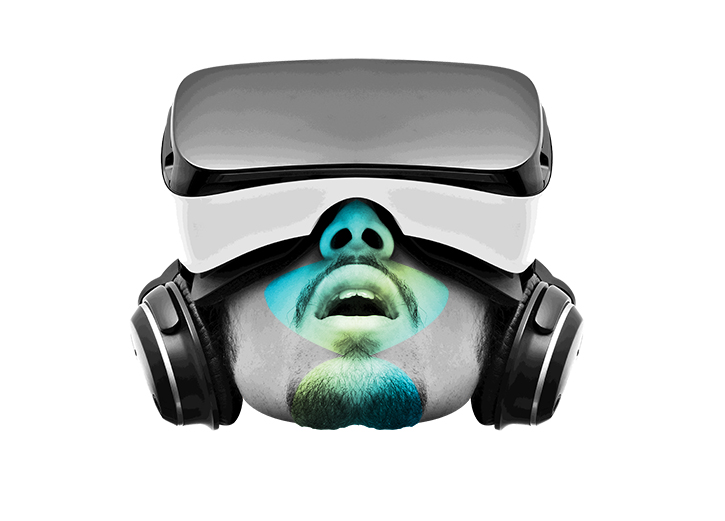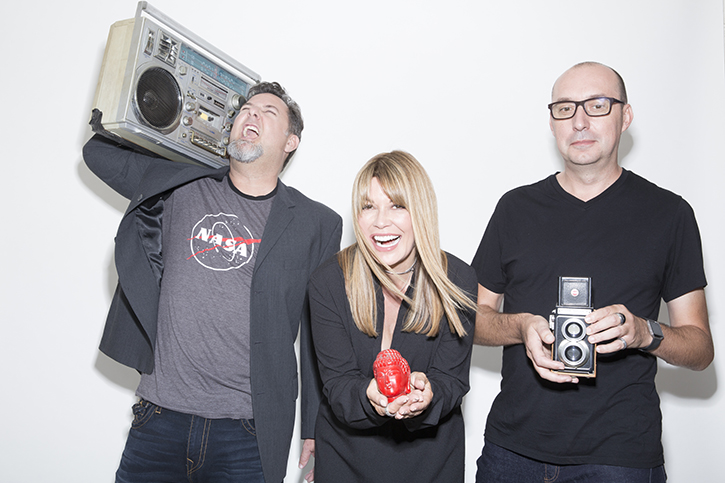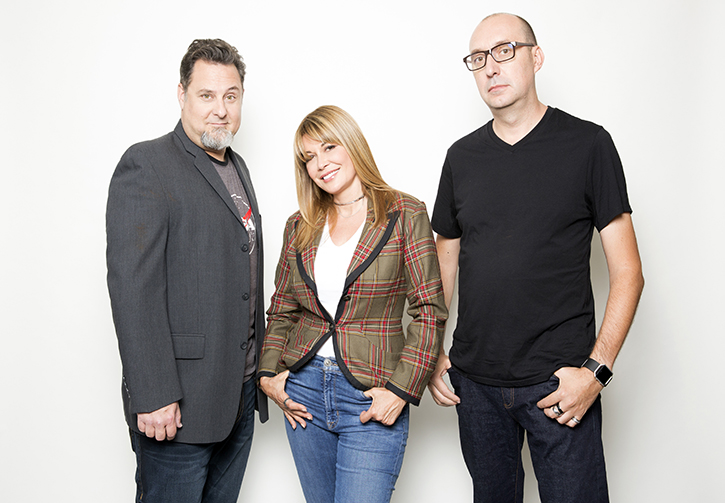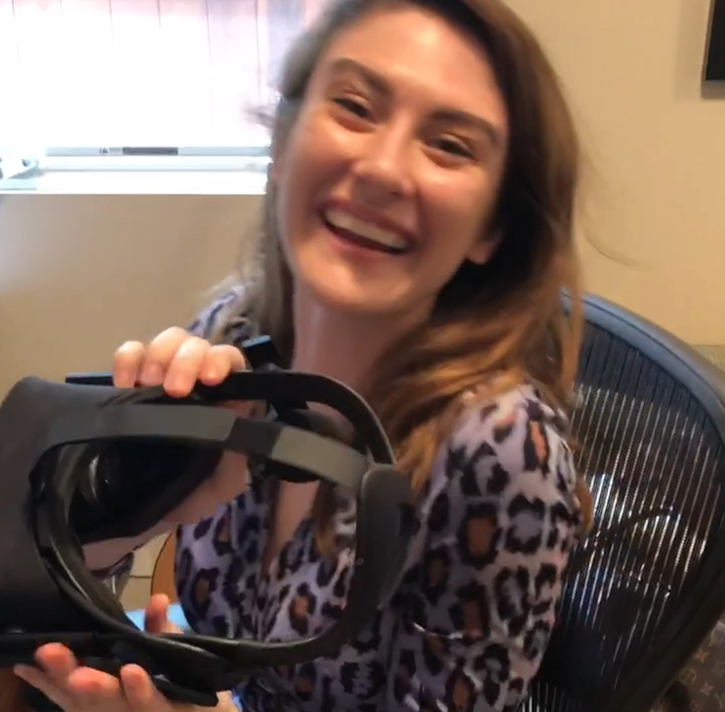Break On Through To The VR Side

A new VR start-up says the medium should stimulate, not simulate, and is creating experiences designed to blow your mind.
Words by Neal Romanek
Darkness. Then a nameless sound, behind you, above you, encircling you. Which becomes music. Then there’s light. Colour. You float through clouds of energy, a thousand feet above a crimson ocean. You feel relaxed, safe, focused, empowered…
No, you’re not at the peak of an ayahuasca experience. You’re just having a Tripp.
Tripp is a California tech start-up harnessing the power of VR to bring people mood-enhancing experiences on-demand. Employing every tool in the VR paintbox – stereoscopic imagery, music, virtual space, interactivity and even binaural beats – Tripp’s vision is to use VR as a tool for everything from stress relief to consciousness raising.
“VR introduces some really great opportunities to innovate,” says game industry veteran and Tripp CEO/co-founder Nanea Reeves. “It introduces some attributes that we really haven’t seen in content. It has deep effects on the emotions as well as neurological and physiological responses, and it becomes a kind of multiplier. We know there are sound frequencies that affect people in a certain way, we know music can affect your mood. And when you put that in the immersive environment of VR, it has a multiplying effect.”
We have heard over and over from every quarter of the industry: I love VR. I just don’t know what it’s for. Reeves and her team have worked hard to find out what VR does best and are focused on enhancing that in new and unusual ways. She sees our traditional ways of thinking about story and the content experience as dead-ends when it comes to developing VR.
“I don’t think that Hollywood has figured out how you tell a story in VR. You can’t have that ‘detached observer’ experience, the POV of a spectator. There is no spectator. You have to incorporate the viewer into the narrative.”
Team Tripp The company aims to bring their experience in gaming to the world of film and TV

“Why would I go through all the trouble of going into VR for something I could do more conveniently on my mobile?”
Reeves and her co-founder, company president Zachary Norman, both came out of the gaming industry. Reeves had been COO of gaming video site Machinima and an exec at gaming giant Electronic Arts. She and Norman worked together at several companies including mobile game developer JAMDAT, which Norman founded in 2000.
The gaming world is many years ahead of the film and TV world in thinking about interactive and immersive storytelling, where the story is not a delivered narrative, but an experience.
“When we have looked at VR, we have hit that same storytelling wall,” says Reeves. “We would build a VR solitaire game where players could explore the space, and find a little sub-plot storyline, but truthfully it’s a lot less friction to play solitaire on your mobile phone on an app. Why would I go through all the trouble of going into VR for something I can do more conveniently on my mobile? People might say ‘This is cool! I love this!’, but they don’t go back to it.
“We started to think ‘What could we do where VR is really needed? We began by thinking of our own experience of VR, where going into VR felt like a retreat or a respite from real life, and we started to lean into that more. We had this idea of trying to stimulate different responses in the user, rather than trying to simulate the real world.”
Gaming the Nervous System
Reeves and Norman began to employ their game development experience from the start. They knew that some of the best games can trigger a flow state in players. The craving for that experience of flow can bring people back again and again. That ability of games to trigger deep emotional responses got the team thinking about how to produce those responses in more targeted ways.
“We began to think: Can we trigger states of calm? Can we trigger focus? Can we stimulate more energy in the user?”
Currently, the company is working on what it is internally calling its ‘Chill’ Tripp. In response to the needs of an increasingly stressed society, they are producing a VR experience aimed at inducing calm and some of the same responses that meditation brings about.
The Tripp platform is designed to make it easy for users to return to the experiences regularly with personalised feedback and plans for ongoing updates. with new Tripps regularly added offering a menu of different experiences – Tripps that pump you up, increase your focus or help you sleep better.
Tripp’s CTO, Andreja Djokovic, contributes a scientific eye to the mix. Djokovic has a PhD in pharmacology with an emphasis on cardiology and neuroscience, though most of his career has been spent in the world of video game development.
“We’re not going to make any health or medical claims until we have real validation,” says Reeves. “Right now, the team is finalising the end-to-end experience so we can get it into a lab in the next 60 days and start testing. The focus will be on what’s happening physiologically as well as neurologically. If we can identify real measurements, then we’ll use that to investigate further. It’s a constant feedback loop for us.”
Tripp has also been conferring with advisers in neuroscience and studying the research available around VR and neurology. Of particular interest is work by Albert ‘Skip’ Rizzo at USC’s Institute for Creative Technologies, and by Jeremy Bailenson and Walter Greenleaf of Stanford University. It’s not surprising that these experts come from the fields of medical research. The medical promise of VR has been one of the most discussed applications for the technology. Already, there are trial uses of VR for treatment of PTSD and in cognitive behavioural therapy, and the imaging and medical education possibilities in VR are enormous.

Train Your Brain
When it comes to VR, people get fixated on 360 stereoscopic imagery and those damned goggles, but the use of sound is at least as important in creating a rich VR experience, so Tripp has brought in Justin Boreta of electronic music group The Glitch Mob to be creative director.
The Tripp experiences also incorporate binaural beats as part of the secret sauce which powers TRIPP’s transformative experiences. Binaural beats – also called audio brain entrainment – are created by simultaneously playing tones of different frequencies in each ear. The combination of the two tones creates the illusion of a third tone at a frequency which is the difference of the first two. Different frequencies can encourage brain waves to also increase or decrease in frequency through the principle of audio entrainment, which is the tendency of brainwaves to synchronise with external rhythmic stimuli.
Using different frequencies of binaural beats, the brainwaves can be coaxed into any of the five brainwave states – delta, theta, alpha, beta, or gamma – producing states from sleep and relaxation to extreme focus.
There is some controversy about the effectiveness of brainwave entrainment through binaural beats, with some dismissing it as new age fluff, but there is a decent body of research around the technique, going back to the 1970s.
“Our main focus now is on the efficacy of a Tripp and making sure it makes you feel better from a qualitative standpoint,” says Reeves. “Obviously, I want measurements on it, because that will take us to another level.”
One of Reeves’ Tripp testers, 25-year-old Isabelle, is already well-impressed with her experience: “This is really going to change things for people. I don’t really like video games or play them. But in the Tripp, I felt like I just really let go. I was in the moment. As someone who gets stressed out all the time, I would use this every day.”
Let It Go Tripp tester Isabelle felt the TRIPP enabled her to stay in the moment and cope better with stress

“We had this idea of trying to stimulate different responses in the user, rather than trying to simulate the real world.”
Hook Me Up
So where do you find your local Tripp dealer?
Though the team’s main focus right now is on research and on developing the Tripp content, Tripp is envisoning a multifaceted distribution model, with a recognition that location-based entertainment is becoming a key avenue for VR distribution.
“Initially, we are going to work with different wellness centres and retail partners, where we could place a ‘Tripp Pod’, a contained lounge that will give you some privacy. People can hop into it for seven to ten minutes to decompress. We want to get it into a few locations, and then start getting user feedback.”
Following that initial location-based rollout, the company’s ‘Chill’ Tripp will become available in a free public beta across VR app stores. When the company has fully developed several Tripps, they will move to a subscription model.
Looking to the future, Tripp hopes to open up the platform for users to create their own Tripps and to work with partners to offer branded, premium Tripps. The company also plans to get more musical and visual artists involved in Tripp creation. The Björks of the world may soon be knocking on their door.
“Obviously, we have to create a healthy business,” says Reeves, “but we’re really motivated to get something out there that potentially could really help a person and become part of their daily tool kit to boost their performance in life.
“We’re excited to get these TRIPP Pods into the field and start getting people tripping.”
This article originally appeared in the April 2018 Issue of FEED magazine.











